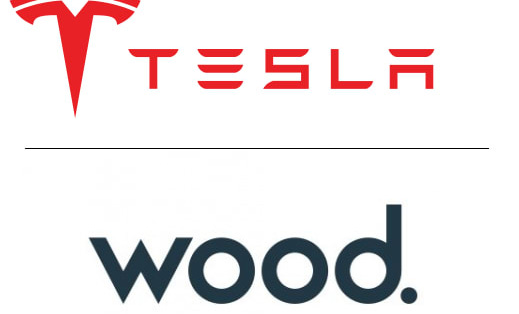Weekly Bulletin #15
Brookfield/HomeServe Plc | UK Homebuilders
Disclaimer
Value Situations is NOT investment advice and the author is not an investment advisor.
All content on this website and in the newsletter, and all other communication and correspondence from its author, is for informational and educational purposes only and should not in any circumstances, whether express or implied, be considered to be advice of an investment, legal or any other nature. Please carry out your own research and due diligence.
Welcome to the new format of the Weekly Bulletin, following the launch of the Paid Tier last week. As I outlined in the Paid Tier launch announcement, the Weekly Bulletin will continue to be published free for all subscribers, and will cover news articles, ideas and other items that I believe are interesting and fit within my Value Situations investment framework.
Model Portfolio
There were updates for three existing names and one change to the Value Situations Model Portfolio last week.
Access to the Model Portfolio is available to paying subscribers only since last week’s Paid Tier launch. If you are a paid subscriber, you will receive a separate bulletin with details of the latest updates and changes to the Model Portfolio.
If you are interested in following the Model Portfolio, please consider becoming a paid subscriber by clicking the Subscribe button below.
Situations of Interest
1. Brookfield Asset Management is acquiring HomeServe Plc
It was recently reported that Brookfield is acquiring UK-listed HomeServe Plc via its Brookfield Infrastructure Funds platform.
HomeServe provides repair, maintenance and installation services for plumbing, heating and electrical systems to households across the UK, the US and parts of Europe.
Brookfield is acquiring HomeServe for £12/share, reflecting a 71% premium to the pre-announcement share price, and which equates to an overall deal value of ~£4.7bn / 15x LTM EBITDA.
Value Sits View
I see this deal as another example of my Forced Purchaser thesis in effect. Brookfield’s infrastructure funds traditionally invest in hard assets and critical infrastructure in areas such as energy, water, transport and data, making the acquisition of a home repairs and maintenance business seem like a stretch beyond its traditional mandate.
However, when one considers that of the ~$3.4 trillion of PE dry powder, ~$300 billion sits in infrastructure funds, it is perhaps not that surprising that some of this capital is deployed into complementary or adjacent sectors such as the support services sector amid a competitive market for private assets where valuations remain elevated.
In this context, Essentra Plc (ESNT), a name I wrote about previously as a break-up value play, continues to look interesting. Post a break-up, ESNT will operate as a pure-play manufacturer and distributor of industrial components. At an undemanding valuation of ~10x LTM EBITDA and good growth prospects, ESNT looks to be a strong candidate for a PE takeover in my view.
2. UK Homebuilders vs. Macro Challenges
Recent headlines suggest tough times ahead for UK homebuilders with concerns over slowing growth and profitability due to a confluence of challenges facing the sector - rising interest rates, cost inflation, the war in Ukraine and remediation provisions post the Grenfell Tower tragedy.
Value Sits View
While there are some challenges facing the sector, one thought I have is whether inflation is actually a supportive factor for homebuilding stocks in the UK in the medium term.
Looking at the nine largest homebuilding stocks in the UK, only three names (Persimmon, Berkeley Group, Countryside Partnerships) trade at a meaningful premium to NAV, with five of the remaining names trading below book value:
Two things come to mind here when looking at sub-1x valuations backed by hard land assets:
Real assets, such as real estate and land tend to do well in inflationary periods with the value of the land, bricks and mortar rising with inflation.
The UK homebuilders sit on very large land banks - for example, Barratt owns ~80,000 plots equating to ~5 years of housing supply, with a carrying value of ~£3bn compared to its EV of ~£4.1bn. Furthermore, these land banks are usually carried on the balance sheet at historic cost, rather than current market value.
In this context, there is a question of whether discounted UK homebuilders represent potential value situations, as they may benefit from a value-uplift “double-whammy”:
All else equal their NAV should continue to rise simply by the power of inflation pulling the value of the underlying land upwards - note UK inflation is currently running at 9% and the Bank of England expects this to rise above 10% this year.
With the land on the books (and underpinning the NAV) carried at historic cost, it doesn’t reflect any inflation that has occurred since these companies acquired their land in many instances. So there is an embedded “catch-up” value to current market prices before factoring in current and future inflation.
A further interesting point to consider here is the concern that the current inflationary regime is in fact stagflationary, being characterised by high and rising inflation and slowing growth. What might that mean for homebuilders and their land bank values?
Looking at the UK Nationwide Building Society’s historic data on house prices, UK home prices have steadily risen over time, but the experience of the 1970s is particularly notable for new home prices. The first chart below shows the trajectory of all house prices across the UK from 1952 to the present, with the second chart pulling out the experience for new home prices only, during the stagflationary 1970s:
Source: Nationwide.
The 1970s is perhaps the most touted analogue to today’s inflationary experience and a repeat of a similar stagflationary regime would suggest home prices have much further to run if current inflation persists - the chart below shows that UK new home prices increased more than 5x during the stagflationary 1970s, significantly more than any other period since the 1950s, including the housing boom of the 2000’s pre-GFC:
Source: Nationwide; Value Situations analysis.
If we are entering a period that in any way repeats the 1970s experience, this would suggest the land banks owned by the UK homebuilders could appreciate substantially in the medium term.
In this light, those builders at sub-1x could well come takeover targets. The current case of Countrywide Partnerships being subject to a £1.5bn / ~$1.9bn offer from US investor In-Cap (despite it trading at a premium to NAV) highlights how the sector may now be in play, following Apollo’s acquisition of Miller Homes and Blackstone’s acquisition of St. Modwen in recent months.
As inflation and an appetite for owning real assets persist, this is an area of the market worth monitoring for opportunistic take-private activity in my view.
Any Other Business
For this week’s AOB, I’m highlighting Howard Marks’ latest memo entitled Bull Market Rhymes. In this memo Marks’ discusses the recurrence of some classic themes in investor behavior over the past two years.
One particular sentence stood out to me, about how perception as much as fundamentals can drive stock prices:
People who haven’t spent much time watching markets may believe that asset prices are all about fundamentals, but that’s certainly not so. The price of an asset is based on fundamentals and how people view those fundamentals. So the change in an asset price is based on a change in fundamentals and/or a change in how people view those fundamentals. Company fundamentals are theoretically subject to something called “analysis” and possibly even prediction. On the other hand, attitudes regarding fundamentals are psychological/emotional, not subject to analysis or prediction, and capable of changing much faster and more dramatically.
I think the recent implosion of growth-tech / innovation names is an excellent example of how sometimes stocks are propped up by attitudes rather than fundamentals, something Marks’ discusses in depth in the memo.
Why Not Subscribe to the Paid Tier?
If you find the ideas in this newsletter interesting, please considering signing up to the newly launched Paid Tier.
You can read more about the paid offering here.
This newsletter is 100% reader supported and free from conflicts of interest or other commercial considerations. In writing Value Situations my job is essentially to generate ideas for subscribers that supplements their own idea origination process.
Furthermore, I believe the value proposition for paying subscribers is compelling. I am a former private equity/special sits investor that has worked with one of the largest alternative investment firms in the world, and so paying subscribers will be getting thoughtful, buy-side quality ideas and analysis for a very small fraction of the cost of employing a buy-side analyst full-time.
If you find this newsletter interesting, please also consider sharing it with friends and colleagues by clicking the Share button below.
Here’s what other investors are saying about Value Situations:






Value Situations was named as one of the Top 100 Must Follow Stock Research accounts by Edwin Dorsey of The Bear Cave Newsletter:




















I really enjoy your work - I am do not make enough for paid tier but I wanted to give you my thanks